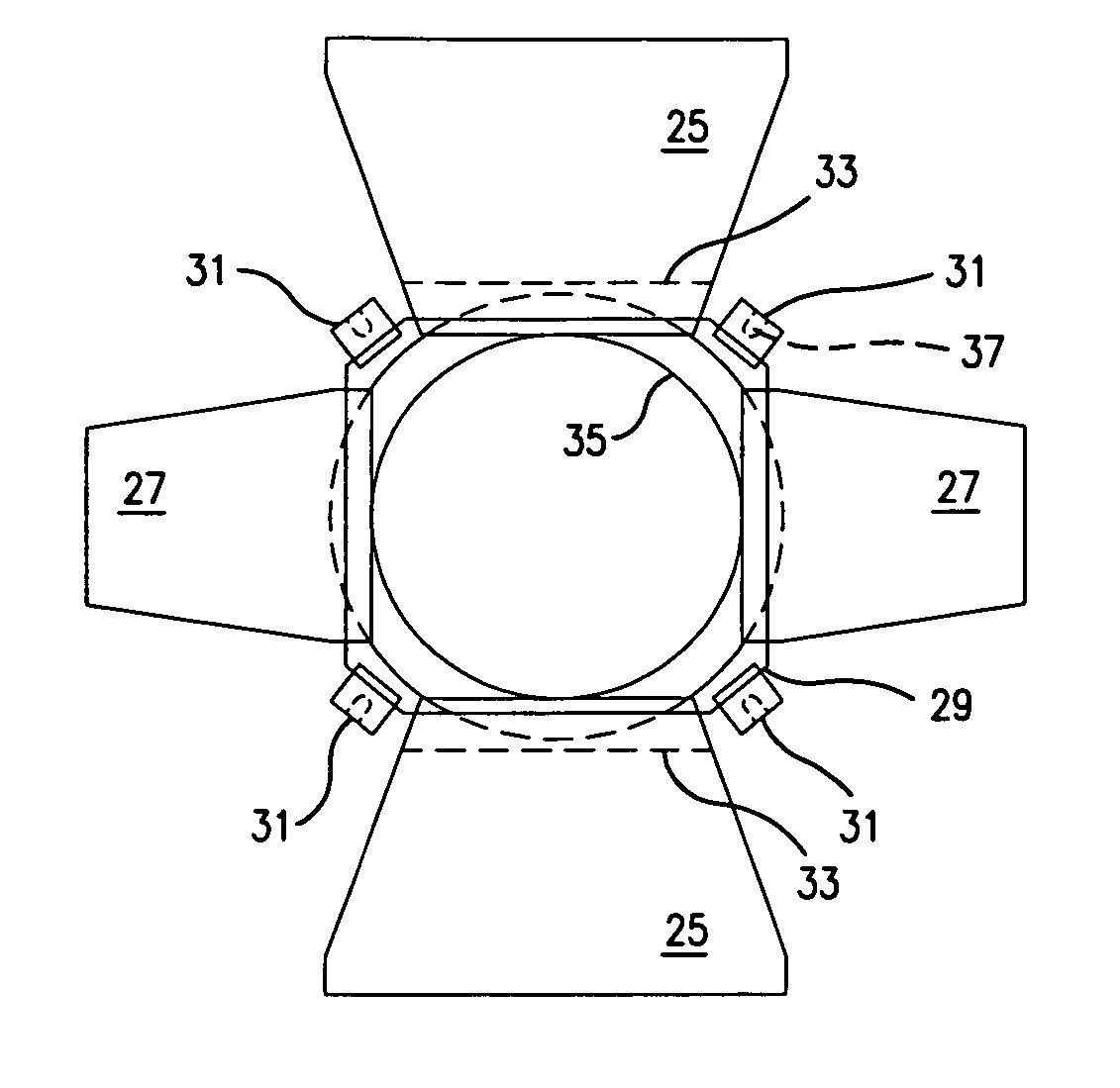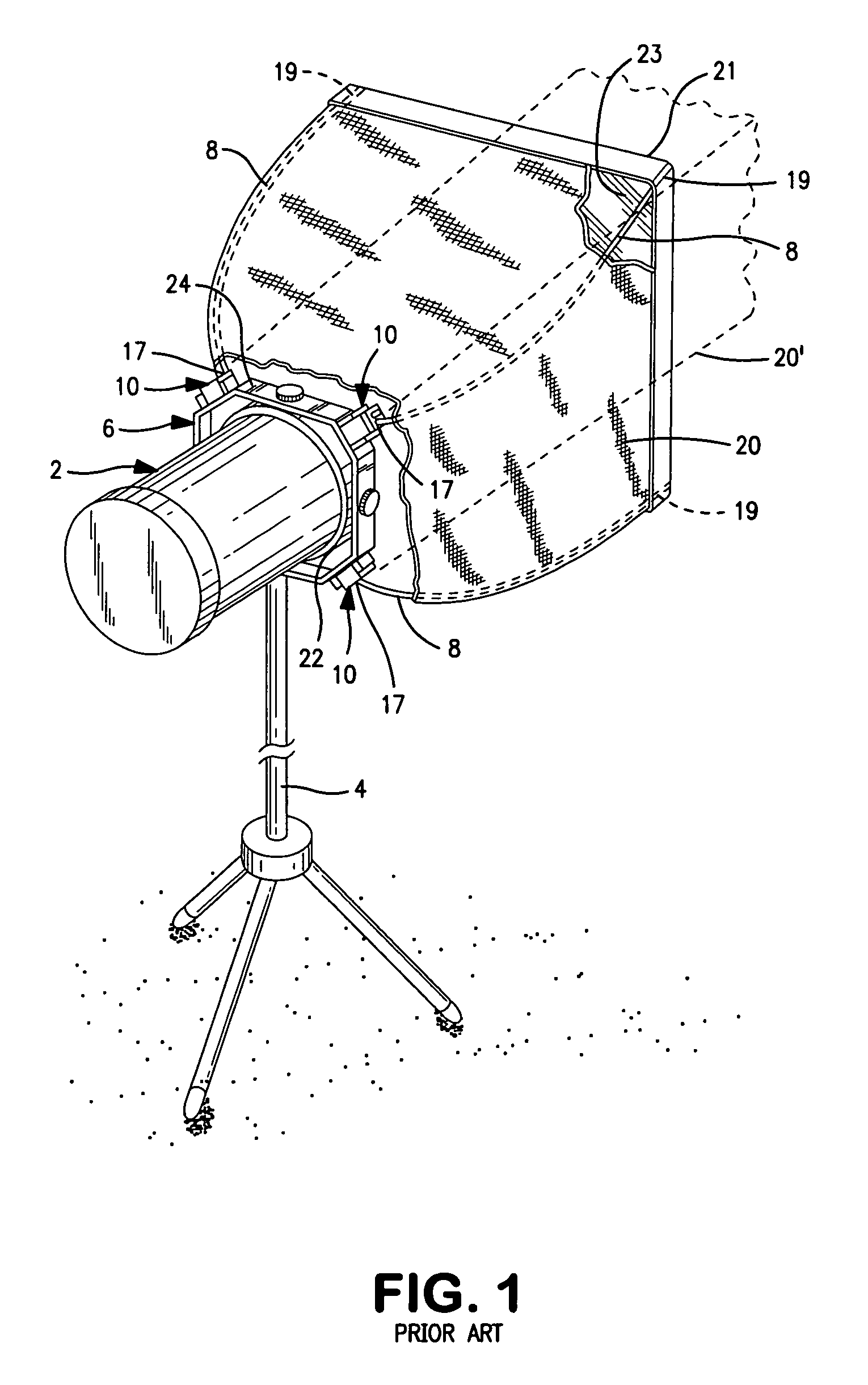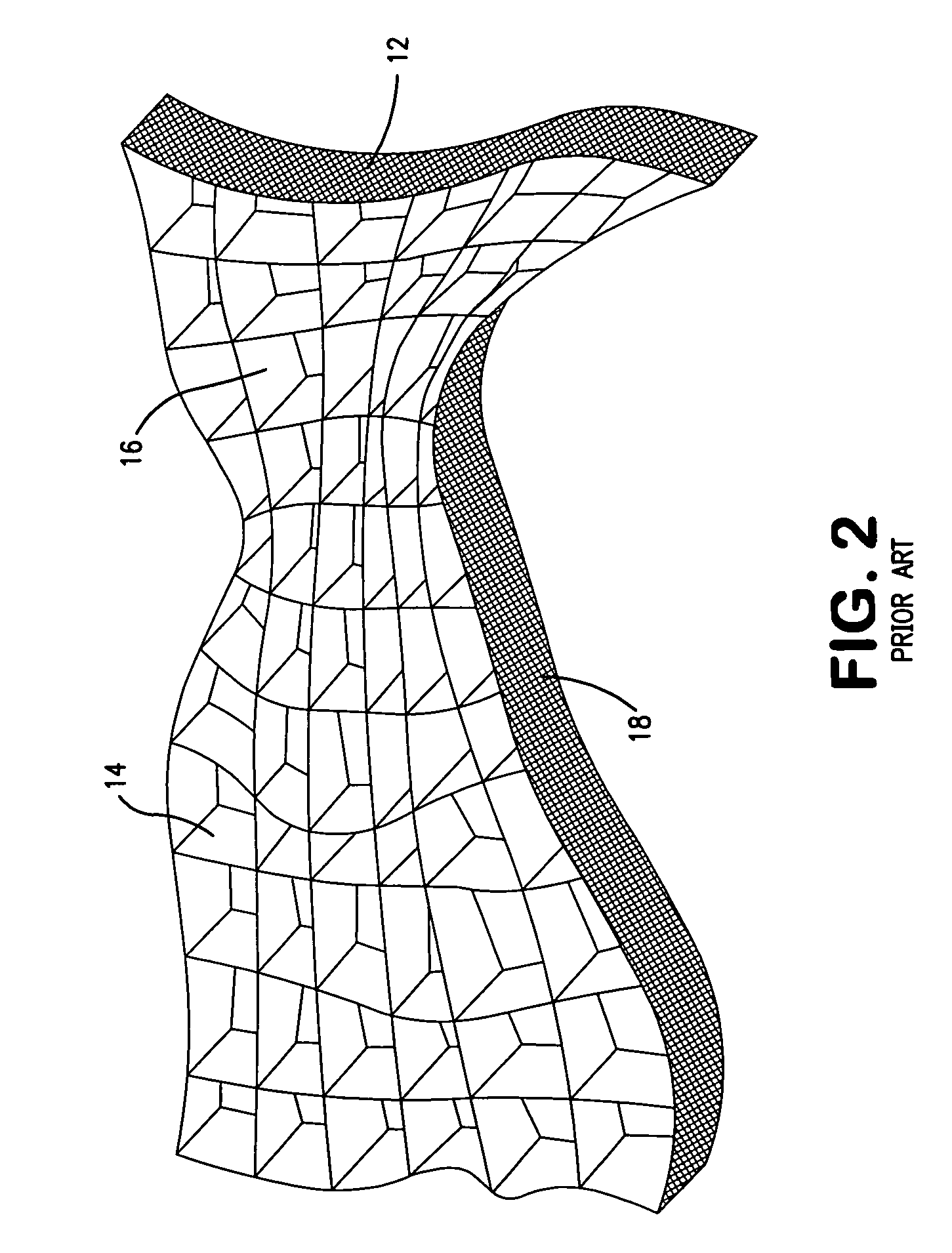Softbox
a softbox and light technology, applied in the field of softboxes, can solve the problems of unsatisfactory light emission from such softboxes, insufficient illumination effect attainable with conventional control grids, and insufficient attachment of known softboxes to spotlight sources, so as to simplify the mounting and avoid undesired lighting of the object surroundings
- Summary
- Abstract
- Description
- Claims
- Application Information
AI Technical Summary
Benefits of technology
Problems solved by technology
Method used
Image
Examples
Embodiment Construction
[0039]In a conventional softbox 20 illustrated in FIG. 1, four cloth-clad rods 8 which extend from the softbox are inserted into holes 17 of blocks 10 which, in turn, are fixed in position to a spotlight source 2 by means of a frame 6. The frame 6 is formed by a metal sheet strip 24 and fastened to a stand 4. The light emission aperture of the spotlight source 2 is enclosed by a mounting ring 22 to which the frame 6 is releasably attached. The light emission aperture 21 of the softbox comprises a translucent covering 23 and receiver 19 for accommodating the rods 8. The blocks 10 are tiltable, allowing the rods 8 to be collapsed (position 20′ of the softbox). If light gates, also referred to as barn doors, are to be used, the softbox 20, together with the attachment device, must first be disassembled from the frame 6 and blocks 10.
[0040]In the conventional control grid according to FIG. 2, differently slotted textile strips 14, 16 are inserted into each other crosswise. This array is...
PUM
| Property | Measurement | Unit |
|---|---|---|
| angle | aaaaa | aaaaa |
| angle | aaaaa | aaaaa |
| width | aaaaa | aaaaa |
Abstract
Description
Claims
Application Information
 Login to View More
Login to View More - R&D
- Intellectual Property
- Life Sciences
- Materials
- Tech Scout
- Unparalleled Data Quality
- Higher Quality Content
- 60% Fewer Hallucinations
Browse by: Latest US Patents, China's latest patents, Technical Efficacy Thesaurus, Application Domain, Technology Topic, Popular Technical Reports.
© 2025 PatSnap. All rights reserved.Legal|Privacy policy|Modern Slavery Act Transparency Statement|Sitemap|About US| Contact US: help@patsnap.com



